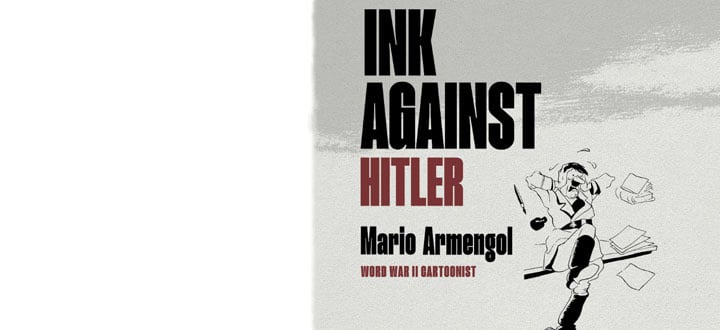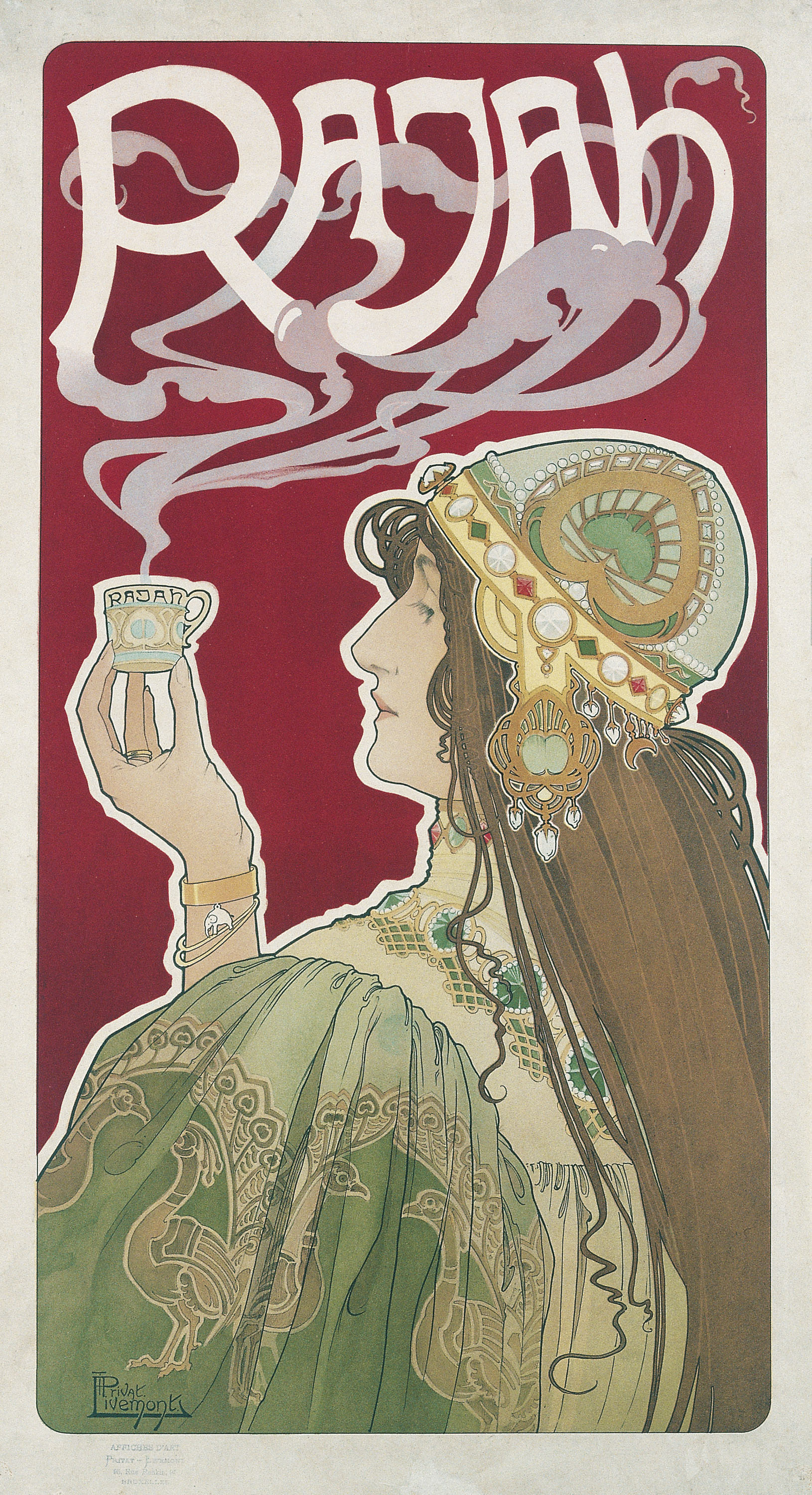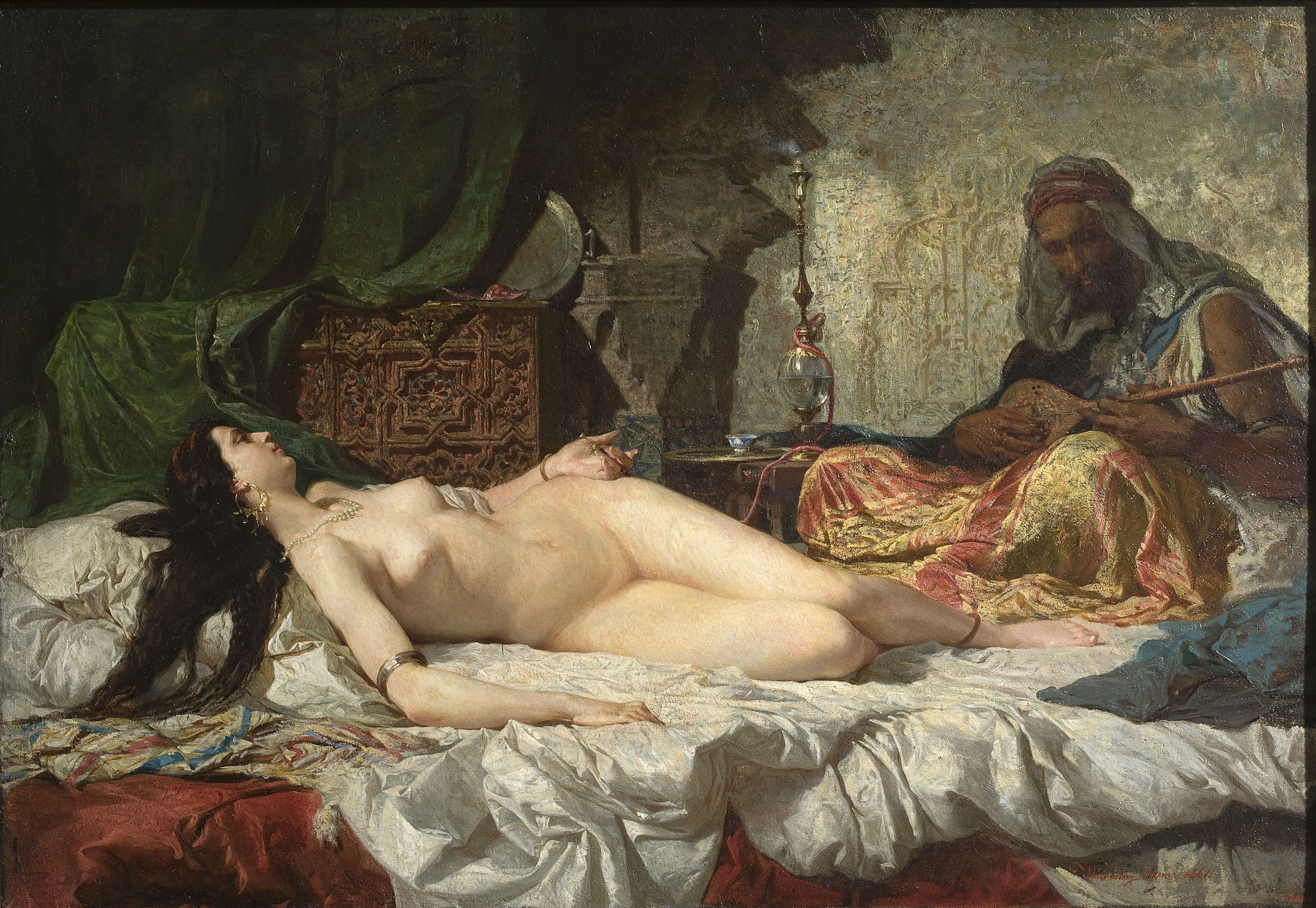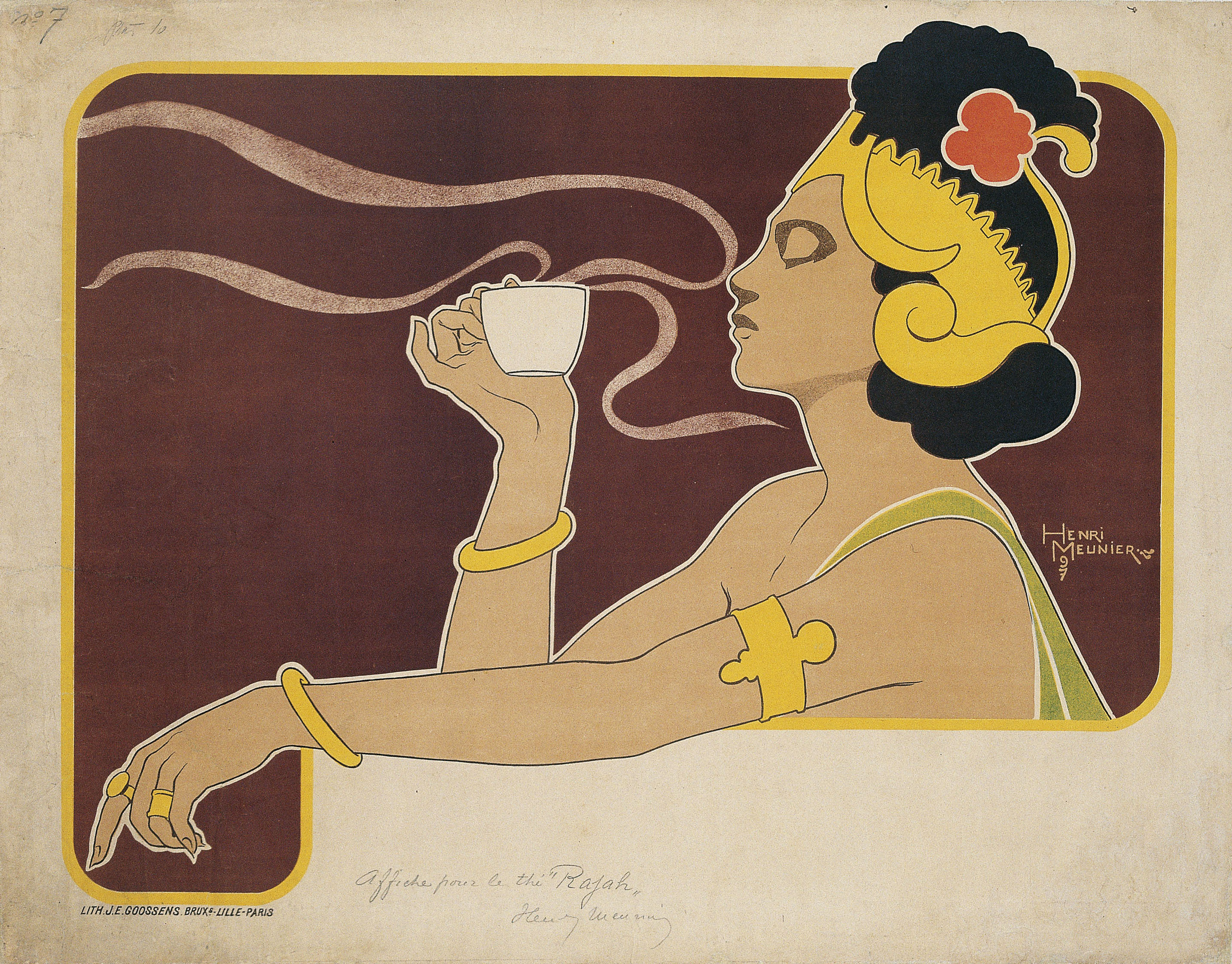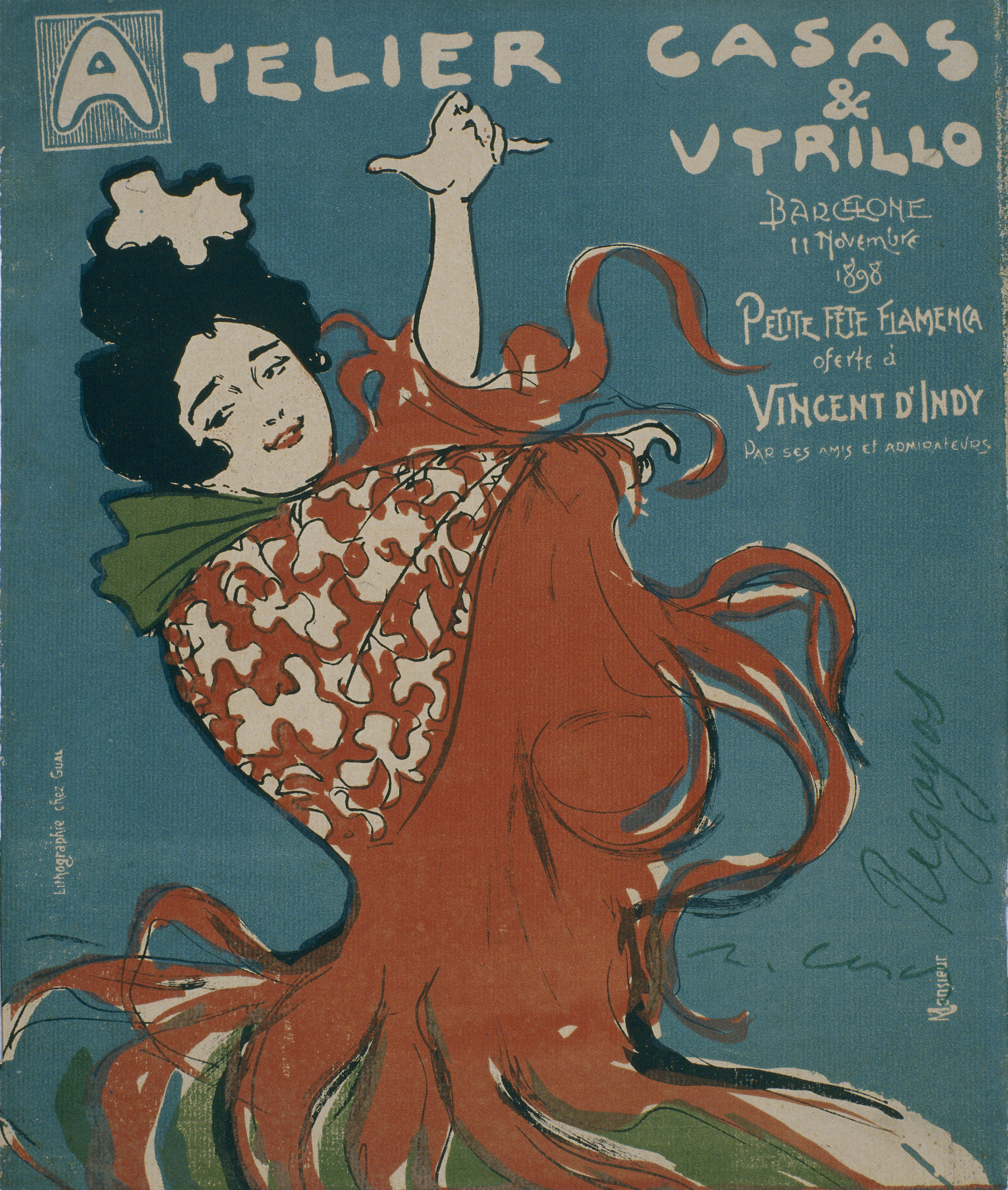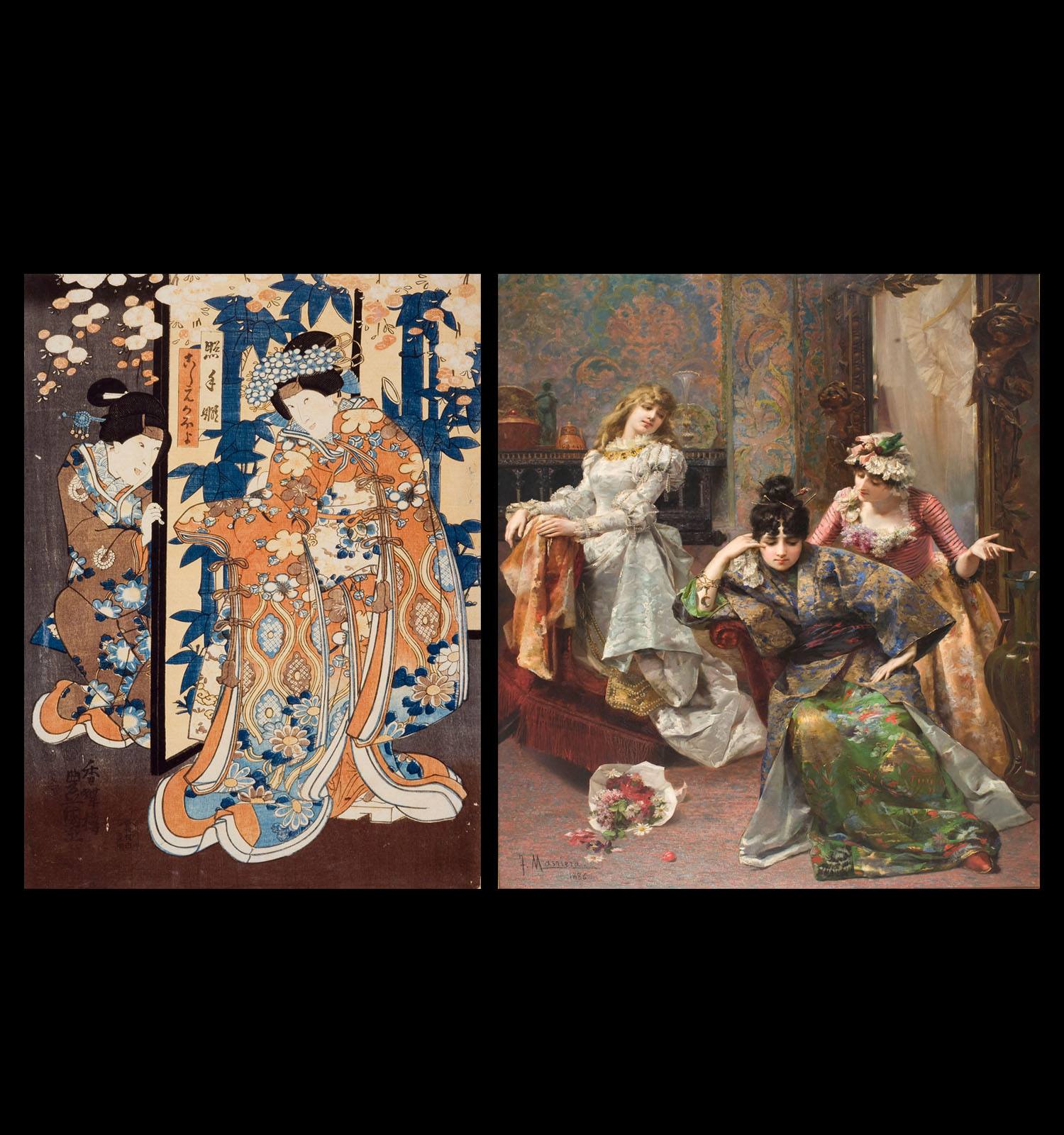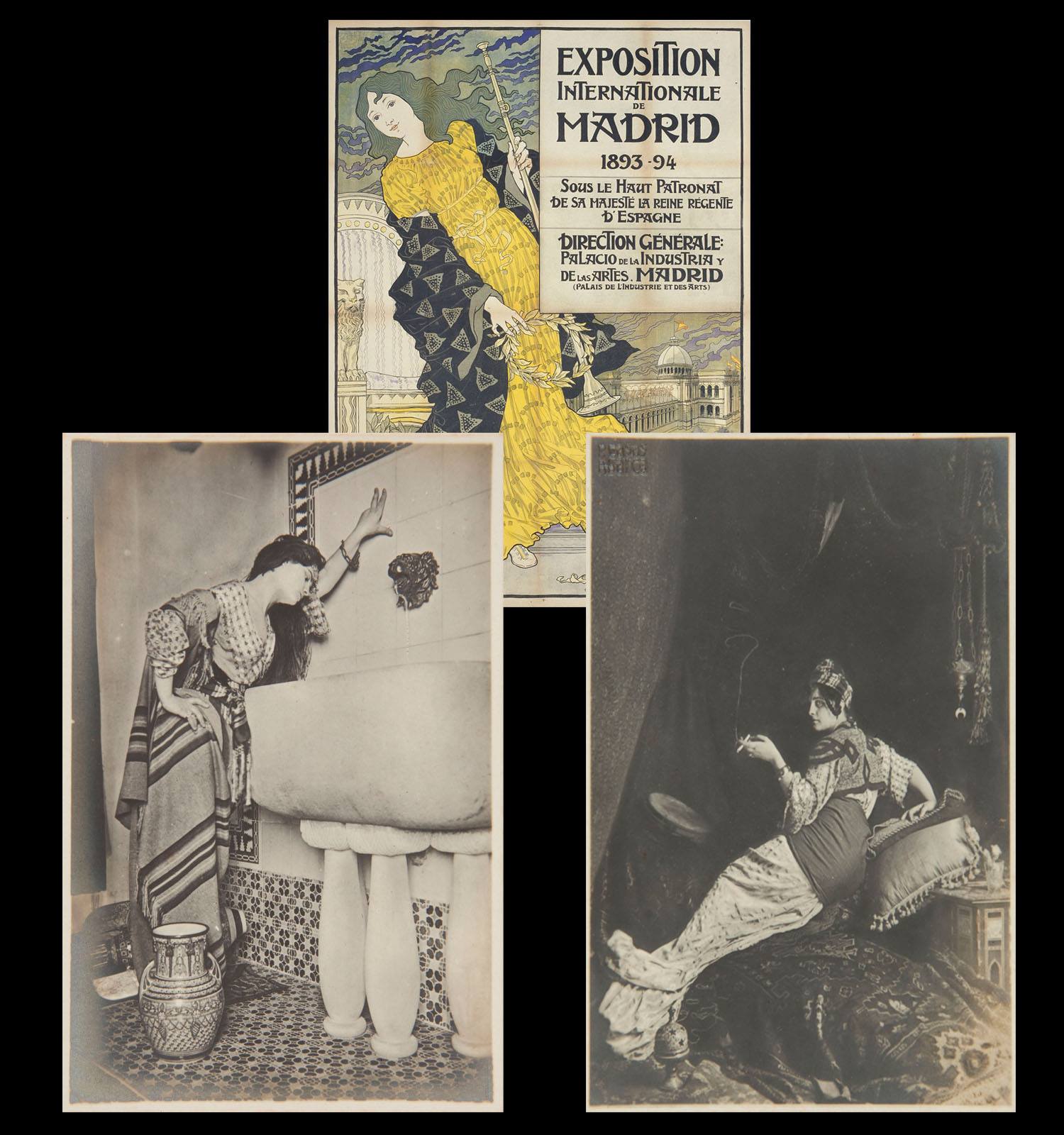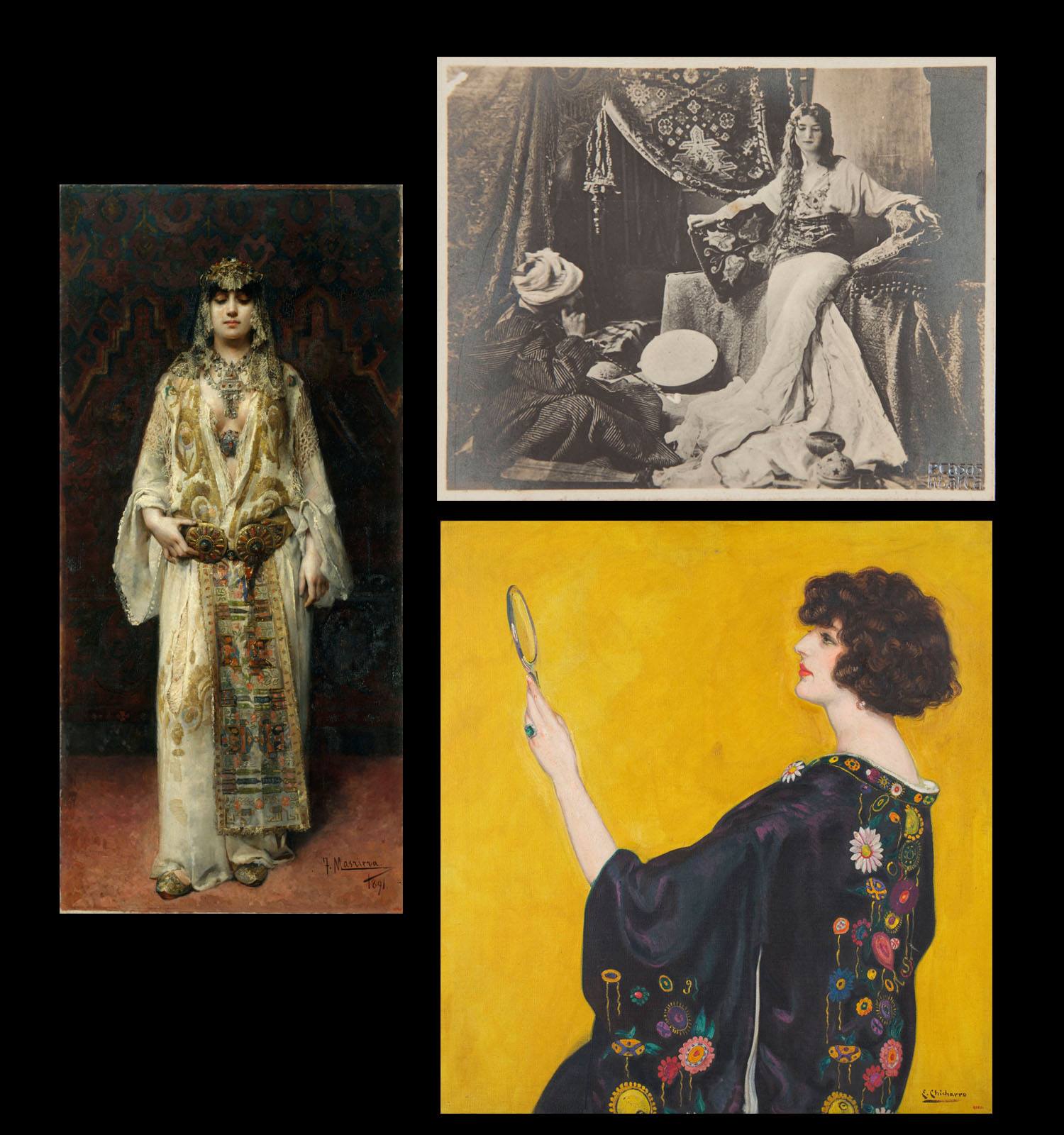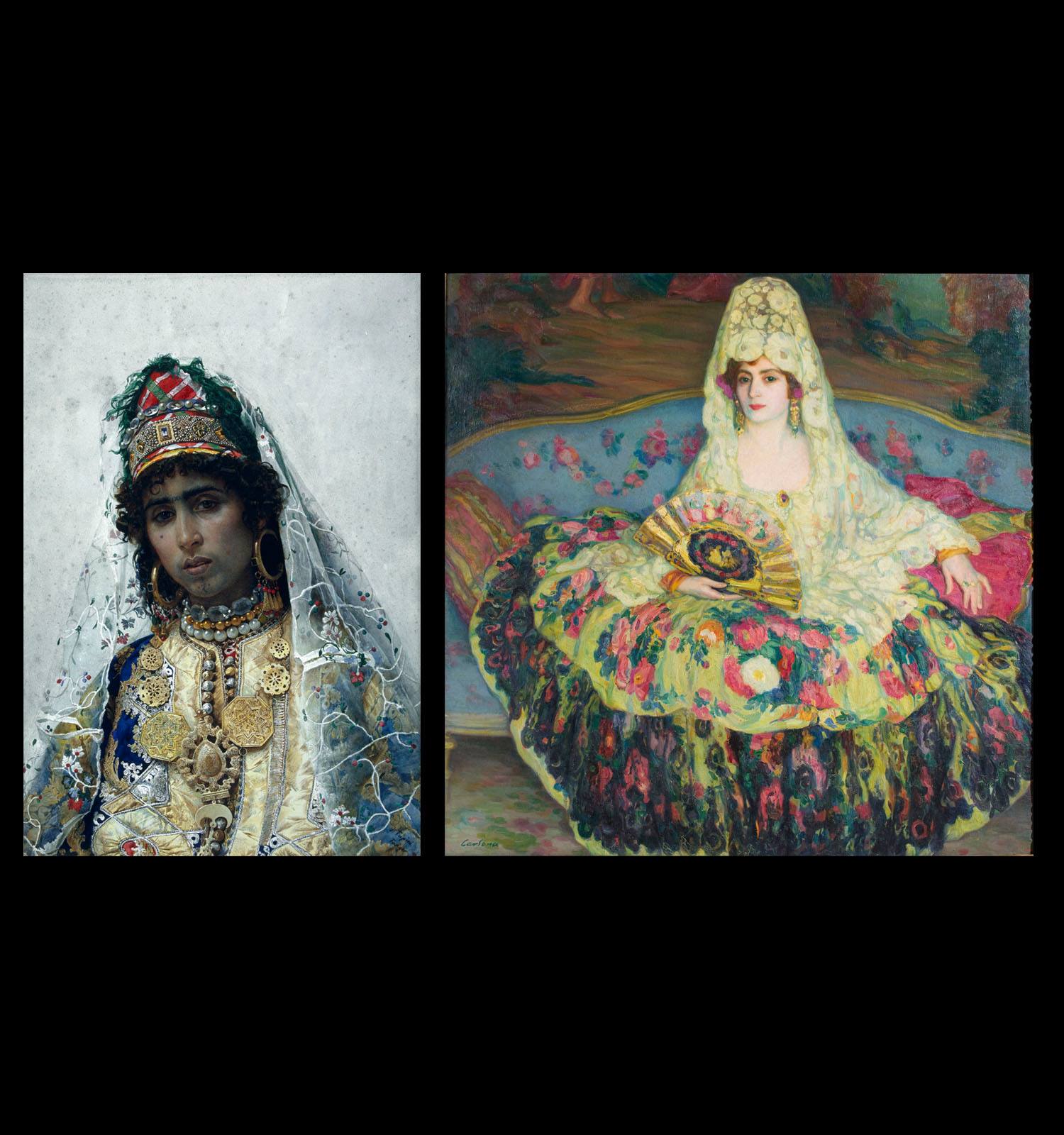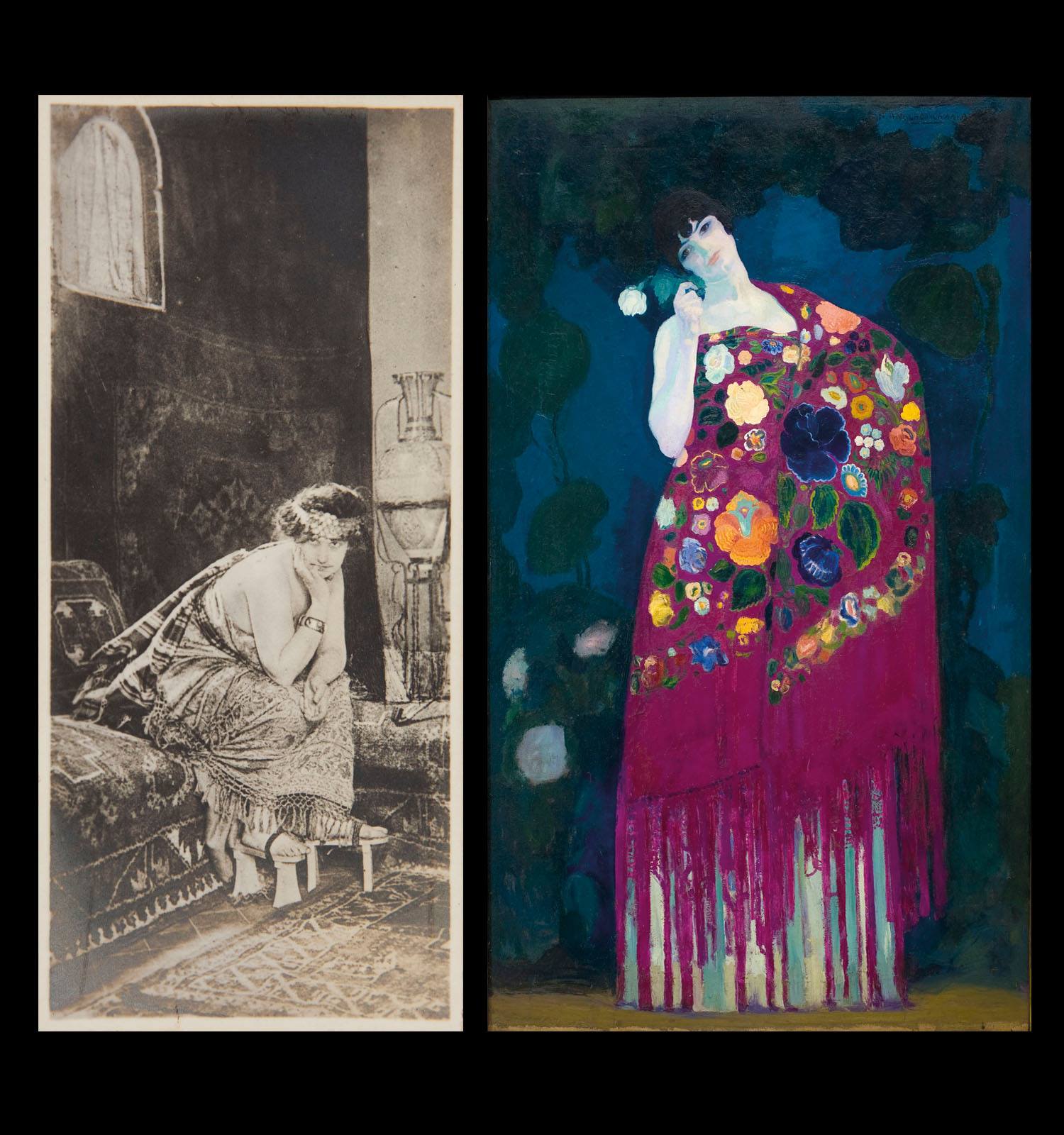1910: The "revolution" begins
1910: The "revolution" begins
The expanding European colonization of Africa, Middle East and Southeast Asia brought the mania for Orientalism into the Western world. Romanticized Eastern exoticism attracted western artists who actively used the Orient themes and motifs in visual arts, architecture, music and performing arts from the beginning of the XIX century.
Orientalism sneaked into the world of fashion design in the 1910s with new fabrics, like silk and chiffon, vivid colours and much more lithe, fluid and soft silhouette. These years are characterized with the popularity of flowing pantaloons, turbans, kimonos, tunics and hobble skirts.
Henri Privat-Livemont, Rajah, 1899
Marià Fortuny, The Odalisque, 1861
Henri Meunier, Thé Rajah, 1897
Ramon Casas, Atelier Casas & Utrillo, 1898
Utagawa Kunisada, Terutehime and Koshimoto Kaoyo, 1847-1848 and Francesc Masriera, After the Ball, 1886
Pere Casas Abarca, Esclave, circa 1900; Eugène Samuel Grasset, Exposition Internationale de Madrid, 1893 and Pere Casas Abarca, Fatima, circa 1900
Francesc Masriera, In the Presence of the Lord, 1891; Pere Casas Abarca, Extase, circa 1900 and Eduardo Chicharro, Woman with a Kimono in Profile, circa 1913-1925
Josep Tapiró, Berber Bride, circa 1896 and Joan Cardona, Woman Dressed Up, circa 1918
Pere Casas Abarca, Langueur, circa 1900 and Hermen Anglada Camarasa, Woman from Granada, circa 191



